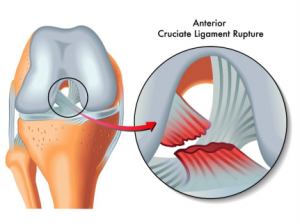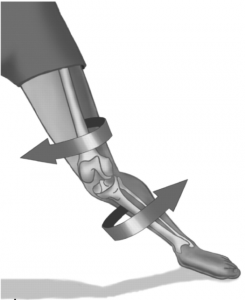ACL INJURY BLOG SERIES – PART 1 (What is an ACL injury?)
This is the first of four of our ACL Injury blog series. If you’re reading this, that means you yourself have done an ACL injury, or maybe it is your teammate or someone close to you, and you’re trying to help them. This will be the perfect place for you. We will be uploading a blog series that will cover what an ACL is and how does one tear their ACL. One of the most controversial conversation currently out there is whether or not to have surgery (ACL reconstruction) if there is an ACL tear. In the second blog, we will be covering that topic on the next blog. Since rehabilitation and prevention is going to be a crucial part of recovery, we will also be covering them.
What is an ACL?
First of all, in order to understand what is going on in this blog, I will explain to you what an ACL is. ACL stands for anterior cruciate ligament. It is one of the most important ligaments in your knee that provides stability. It prevents the shin bone (tibia) from gliding forward and rotating too much.

Who are more prone?
Unfortunately, females are 3x more prone to tearing their ACLs. This is due to a number of reasons, anatomical alignment being one of them. Female pelvis is wider and thus increasing valgus moment in the knee (shown in the diagram). We will explain more about this in the next section. Hormones can play a part as well, as they can affect the laxity of ligaments, making joints less stable.
How does one tear an ACL?
Now let’s get into the physics of ACL injury mechanism. You can tear your ACL in one of 2 ways. Most commonly, ACL is torn through valgus moment, where the knee goes inward in a slightly bent position (shown in the diagram below). Changing of direction, cutting, pivoting, getting tackled/pushed can put you in this position that we sometimes call “point of no return”. Another much less common way an ACL can tear is through hyperextension like how Zlatan Ibrahimovic did. These 2 positions put the ACL under a lot of tension that it can partially or fully tear.

What are the signs and symptoms of an ACL injury?
So, now that you know how ACL can get torn, you might be asking what are other signs and symptoms that can confirm this. Firstly, you’d hear a “pop” or “crack”, and your knee would give way. Swelling will occur within the hour. You might or might not feel pain the second that the injury occurs, but you will definitely feel it a couple of hours later. Your knee movements will be restricted, and thus affect your walking. Sometimes, the knee would feel very unstable with walking, especially as you change direction. Your knee might buckle or give way. As times goes, your quadriceps muscles (front thigh) will get skinnier as they get weaker.
Well… Now what to do?
Definitely stop sporting activities first, and ice your knee. You can also elevate and put on compression tights. Most importantly, see us the physios (this would be preferable, prior to seeing a surgeon). ACL injuries are a big deal. So, we will guide you through your decision making and rehabilitation. MRI scans are crucial to check for other injuries to in the knee (such as other ligaments or meniscus tear) as they commonly occur due to the traumatic mechanism of injury. We will also give our opinion regarding whether to opt in for surgery or go through a conservative treatment. We will be covering this topic on surgery vs non-surgery on the next blog, so stay tuned.
I hope this blog clears up a few things you need to know about ACL injuries. If you have any questions, please feel free to call us at 9569 5145, or email us at (info@insyncphysio.com.au). Alternatively, you can click here to make a booking for a session with one of our physio experts. Thanks for visiting our website!
ACL INJURY BLOG SERIES:
Part 1: What is an ACL injury?
Part 2: Surgery or No Surgery?
References for the pictures used in this blog:
